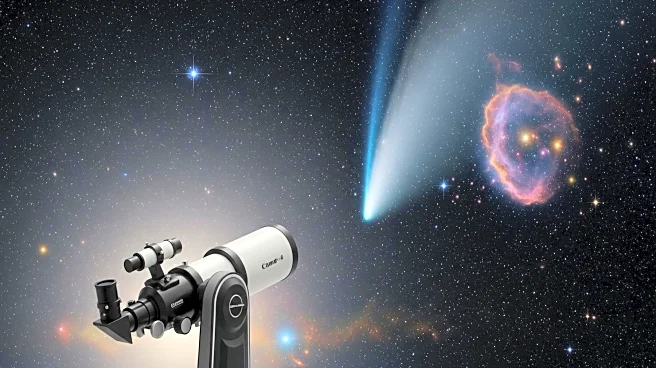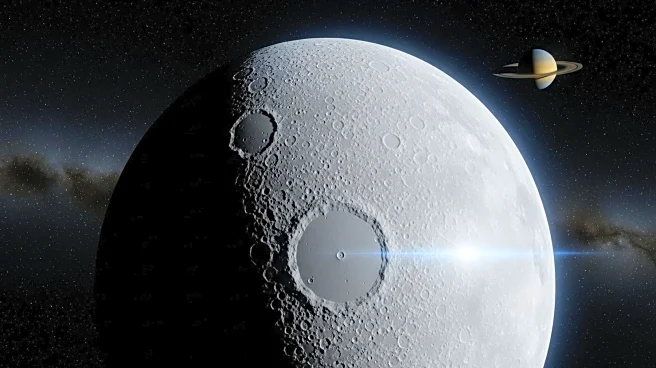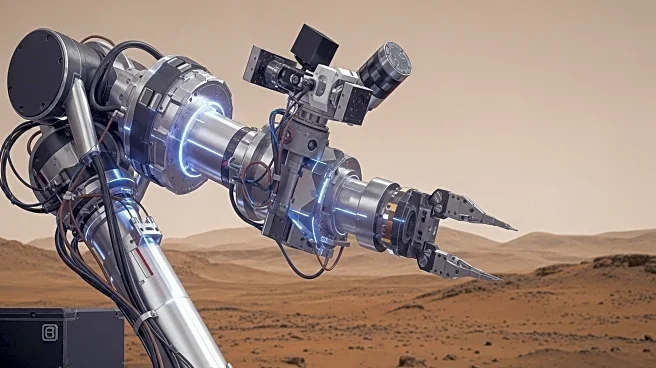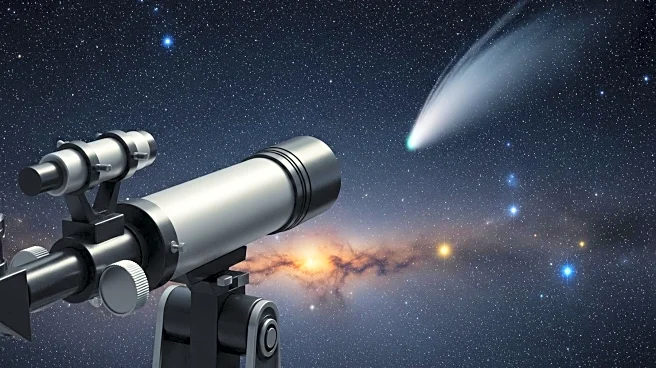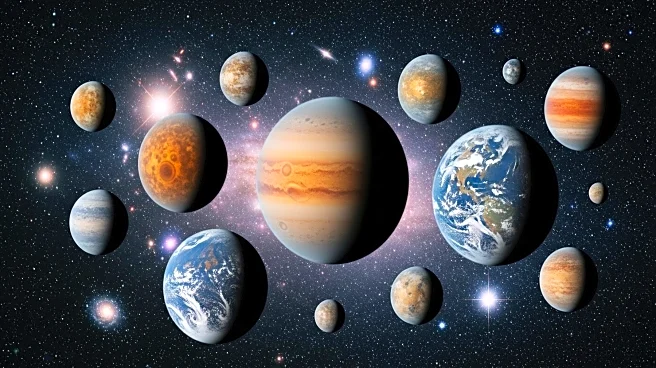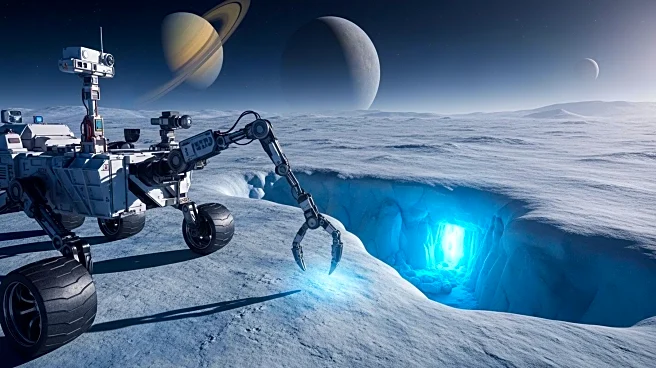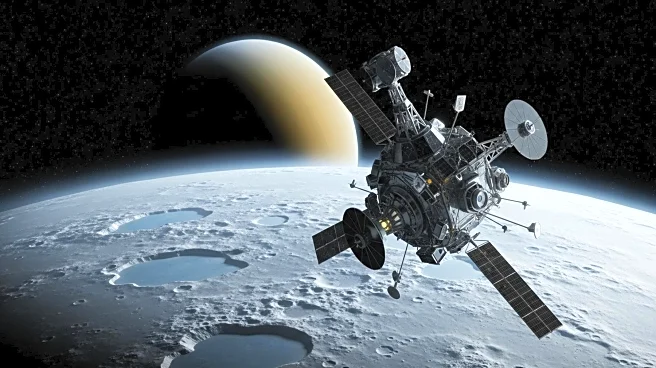What's Happening?
Researchers at Auburn University have discovered hydroxyl emissions from the interstellar comet 3I/ATLAS, indicating the presence of water on its surface. This finding was made using NASA's Neil Gehrels
Swift Observatory, which detects ultraviolet signatures that are otherwise blocked by Earth's atmosphere. The discovery allows scientists to study the comet's characteristics using the same methods applied to solar system comets, providing insights into the processes of comets originating from other star systems. Dennis Bodewits, a physicist involved in the research, emphasized the significance of detecting water from an interstellar comet, suggesting that life's chemical ingredients are not unique to our solar system.
Why It's Important?
The detection of water on 3I/ATLAS is crucial for understanding the chemical processes of interstellar comets, which differ from those within our solar system. This discovery could enhance our knowledge of how planets and comets form around stars, potentially offering clues about the conditions necessary for life beyond Earth. The comet's unexpected water emissions, occurring far from the sun, challenge existing theories about comet behavior and suggest a more complex structure. This research contributes to the broader field of astrobiology and the search for extraterrestrial life by highlighting the universality of life's building blocks.
What's Next?
Future research will likely focus on further analyzing the comet's emissions to understand its structure and origin. Scientists may use this data to refine models of comet formation and behavior, particularly for those originating outside our solar system. The findings could lead to new methods for detecting and studying interstellar objects, potentially uncovering more about the universe's composition and the prevalence of life's ingredients across different planetary systems.
Beyond the Headlines
The discovery of water emissions from 3I/ATLAS underscores the importance of space-based observatories in studying celestial phenomena. It also highlights the role of interdisciplinary collaboration in advancing our understanding of the cosmos. The research may inspire new technologies and methodologies for exploring distant star systems, contributing to the ongoing quest to answer fundamental questions about the universe and our place within it.
